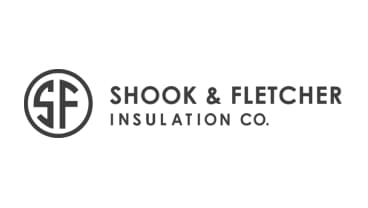
Sean Fitzgerald, PG, is a research geologist specializing in asbestos environmental studies.
Shook and Fletcher Insulation Company made asbestos insulation products from 1949 through the 1970s. Asbestos litigation compromised the company’s finances and forced it to file for bankruptcy in 2002. That same year, it created an asbestos trust fund with $109 million to handle claims.

Shook & Fletcher trust fund was developed after the company filed for reorganization through Chapter 11 bankruptcy in 2002 because of asbestos litigation. The company had already paid more than $40 million in settlements. The current payment percentage is 58%. Unlike other asbestos trusts, the scheduled payment amount depends on your location at the time of asbestos exposure.
| Location of Exposure | Mesothelioma | Lung Cancer | Other Cancer |
|---|---|---|---|
| Mississippi or Alabama | $22,000 | $6,000 | $2,500 |
| Georgia, Louisiana or Texas | $10,000 | $2,700 | $1,500 |
| Any other location | $10,000 | $1,800 | $1,000 |
The bankruptcy and reorganization plan created the Shook & Fletcher Asbestos Settlement Trust to handle asbestos claims. This asbestos trust fund was established in 2002 and contains an estimated $109 million to compensate people who file claims.
Workers who handled Shook & Fletcher insulation are at serious risk of health issues because of asbestos exposure. Families notice symptoms like shortness of breath or chest pain that signal mesothelioma. Patient Advocates match you with experienced lawyers who know asbestos claims well. They review your work history and connect you to experienced attorneys who file trust claims fast.
Lawyers help you gather medical records and prove exposure links. They submit claims to the Shook & Fletcher Asbestos Trust for compensation. Asbestos attorneys also pursue lawsuits against other companies that supplied the materials that workers used. Workers’ compensation covers some lost wages and treatments as well.
Workers who developed asbestos-related diseases began filing asbestos lawsuits against Shook & Fletcher in the mid-1970s. At the time of the company’s bankruptcy, it reported at least 80,000 active asbestos lawsuits.
The wife of a former insulator filed one such lawsuit. Her husband passed away from mesothelioma from asbestos exposure at several companies, including Shook & Fletcher. Her wrongful death lawsuit ended in an award of $8.4 million, which was split among all the companies he had worked for.
Before it went bankrupt, Shook & Fletcher joined 19 other asbestos companies in a 1993 class-action lawsuit that tried to compel insurance companies to pay asbestos claims. The courts threw the case out, and the Supreme Court refused to hear it. After that, Shook & Fletcher settled with every insurer except Safety National Casualty Company.
The disagreement with Safety National involved insurance policies from 1983 to 1985. Lower courts ruled that Safety National only had to cover claims from those years. Shook & Fletcher tried to appeal the case with the Supreme Court a second time, but the judge said no again.

Gain access to trust funds, grants and other forms of compensation for you or your loved ones.
Get Help NowShook & Fletcher made iron, coal and brick products before it entered the insulation industry in 1949 with asbestos-containing products. The company grew quickly and supplied these heat-resistant items to shipyards, refineries and construction sites.
Asbestos was once considered the ideal fireproofing and insulating material for its ability to withstand high temperatures. As a result, insulation industry employees were at risk of exposure while working with these asbestos products.
Tens of thousands of these workers developed asbestos-related diseases like mesothelioma after handling the company’s products. Many who became ill filed mesothelioma lawsuits.
Employees who manufactured these products before the 1970s faced a high risk of exposure to asbestos. Construction workers often came into contact with asbestos when installing or repairing Shook & Fletcher products.
Higher Risk Jobs
These materials remained on job sites long after the company stopped producing asbestos products. Even after the 1970s, industrial workers in certain occupations continued to inhale asbestos fibers while handling these products.
Shook & Fletcher produced many products that may have contained asbestos. The company’s product line also included dozens of thermal and acoustic insulation products.
Shook & Fletcher Asbestos-Containing Products
More than 34 manufacturing companies helped produce Shook & Fletcher products. These included Dow Chemical Company, Forrest Manufacturing Company and Owens Corning Fiberglass. Workers at these partner companies were also at risk of asbestos exposure during production.
Recommended ReadingStay up-to-date on treatment, research, clinical trials, doctors and survivors
The information on this website is proprietary and protected. It is not a substitute for professional medical advice, diagnosis or treatment. Any unauthorized or illegal use, copying or dissemination will be prosecuted. Please read our privacy policy and terms of service for more information about our website.
This website and its content may be deemed attorney advertising. Prior results do not predict a similar outcome.
The Mesothelioma Center’s claim as the most trusted resource is based on our more than 150 5-star Google and BBB reviews. Our organization also helps more than half of all mesothelioma patients annually diagnosed.
Your web browser is no longer supported by Microsoft. Update your browser for more security, speed and compatibility.
If you are looking for mesothelioma support, please contact our Patient Advocates at (855) 404-4592
The Mesothelioma Center at Asbestos.com has provided patients and their loved ones the most updated and reliable information on mesothelioma and asbestos exposure since 2006.
Our team of Patient Advocates includes a medical doctor, a registered nurse, health services administrators, veterans, VA-accredited Claims Agents, an oncology patient navigator and hospice care expert. Their combined expertise means we help any mesothelioma patient or loved one through every step of their cancer journey.
More than 30 contributors, including mesothelioma doctors, survivors, health care professionals and other experts, have peer-reviewed our website and written unique research-driven articles to ensure you get the highest-quality medical and health information.
My family has only the highest compliment for the assistance and support that we received from The Mesothelioma Center. This is a staff of compassionate and knowledgeable individuals who respect what your family is experiencing and who go the extra mile to make an unfortunate diagnosis less stressful. Information and assistance were provided by The Mesothelioma Center at no cost to our family.LashawnMesothelioma patient’s daughter


Asbestos.com. (2026, January 13). Shook & Fletcher Trust Fund and Lawsuits. Retrieved January 17, 2026, from https://www.asbestos.com/companies/shook-and-fletcher/
"Shook & Fletcher Trust Fund and Lawsuits." Asbestos.com, 13 Jan 2026, https://www.asbestos.com/companies/shook-and-fletcher/.
Asbestos.com. "Shook & Fletcher Trust Fund and Lawsuits." Last modified January 13, 2026. https://www.asbestos.com/companies/shook-and-fletcher/.
An occupational scientist or another expert who specializes in occupational hazards reviewed the content on this page to ensure it meets current scientific standards and accuracy.

Sean Fitzgerald, PG, is a research geologist specializing in asbestos environmental studies.
Our fact-checking process begins with a thorough review of all sources to ensure they are high quality. Then we cross-check the facts with original medical or scientific reports published by those sources, or we validate the facts with reputable news organizations, medical and scientific experts and other health experts. Each page includes all sources for full transparency.
Please read our editorial guidelines to learn more about our content creation and review process.
